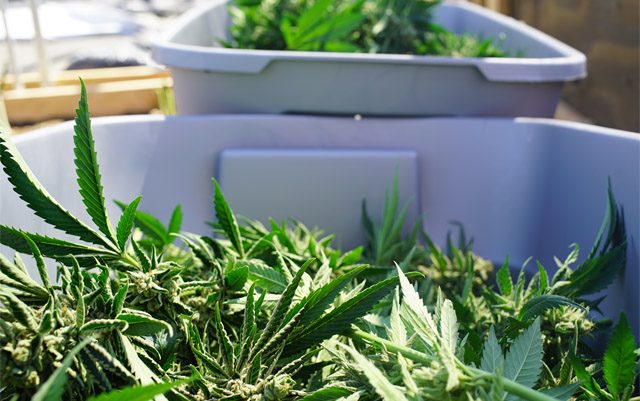By now many of you have heard the devastating news: There’s too much marijuana in Oregon. Perhaps I should have told you to sit down first; for those who fainted after reading that sentence, my apologies.
All jokes aside, this is apparently a huge deal. State authorities put the surplus from last year’s harvest alone in excess of 2 million pounds of marijuana. With supply outpacing demand in the state, prices have plummeted, putting many businesses in the crosshairs of failure.
The plan to rectify this is to cap the number of cultivation licenses. But the worry among state officials is that much of the surplus marijuana will end up on the black market out of state, where is can bring higher prices.
Under market conditions, much of the surplus would flow out of state, to areas where supply is not quite meeting demand. Some growers would go out of business and some would survive as the market continuously pushed toward equilibrium of supply and demand. But here we hit a problem that most legal products don’t face: Oregon growers can’t legally sell their product out of state.
This fact alone dictates much of what happens next. Faced with financial destitution, most growers will run the risk of selling their product illegally to other states. This is a big no-no in the eyes of the feds, something state officials in Oregon live in fear of.
So while the best solution – interstate commerce – is forbidden, the state will try to adjust the supply of marijuana relative to demand within the state while cracking down on the black market, i.e. prohibition.
Oregon is home to slightly more than 1% of the United States’ total population. This means that growers there are legally barred from selling their product to roughly 99% of the market. Will many fail under those conditions? Absolutely. How many growers in Oregon will turn to the illegal market? How many will get busted? How many lives and families will be destroyed?
While impressive in many respects, the rollout of legalization across the U.S. has been haphazard and incredibly inefficient. How much investment has been wasted because the legal cannabis market in the U.S. follows no logical sense?
Government is not the solution to this “problem”. The federal government needs to get out of the business of marijuana prohibition and let the legal cannabis market develop like every other legal market.







The Farm Bill of 2018 segmented cannabis plants into prohibited “marihuana” plants and legal “hemp” plants, in blatant disregard of the 10th Amendment’s promise for cannabis.
“The federal government needs to get out of the business of marijuana prohibition and let the legal cannabis market develop like every other legal market.”
Reforming the federal definition of marijuana to carefully de-schedule all cannabis plants could remove the interstate prohibition of marijuana, and influence local cannabis growers to expand their mix of cannabis plants to include more fibrous varieties for the new interstate cannabis markets. Consider how this reformed definition would reduce federal interference in the cannabis markets:
The term “marijuana” means all parts of the smoke produced by the combustion of the plant Cannabis sativa L. which is, as are the viable seeds of such plant, prohibited to be grown by or sold by any publicly traded corporation or subsidiary company, and such smoke is prohibited to be inhaled by any child or by any person bearing any firearm, as is the intake of any part or any product of such plant containing more than 0.3% THC by weight unless prescribed to such child by an authorized medical practitioner.